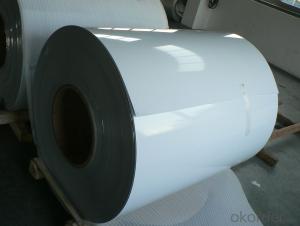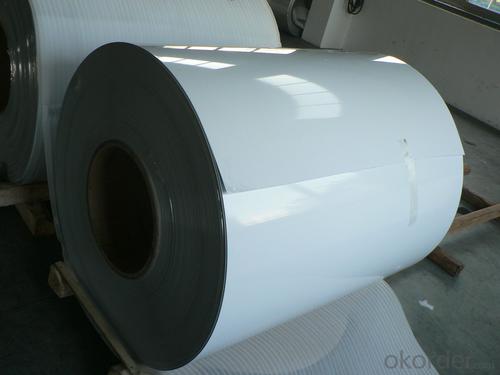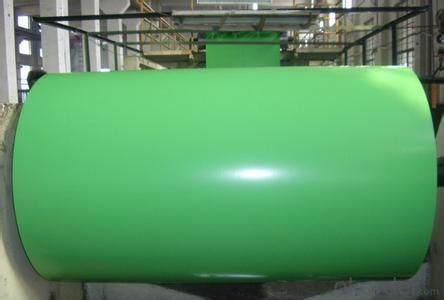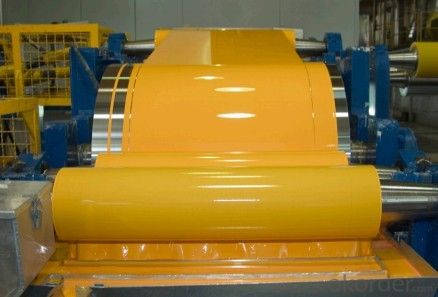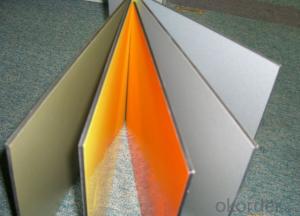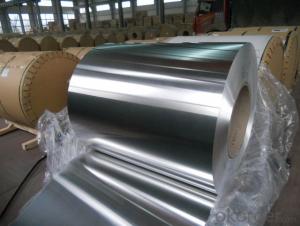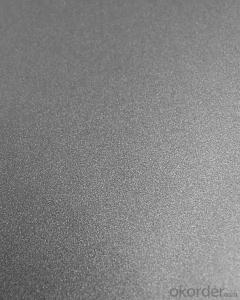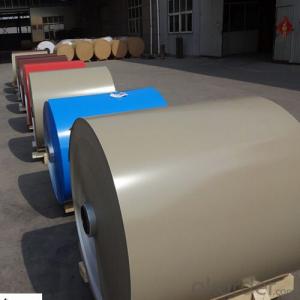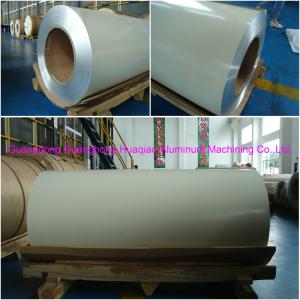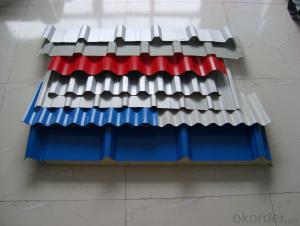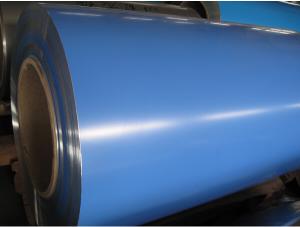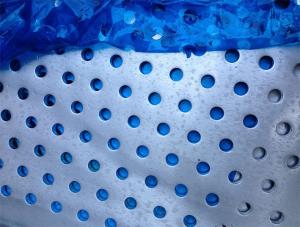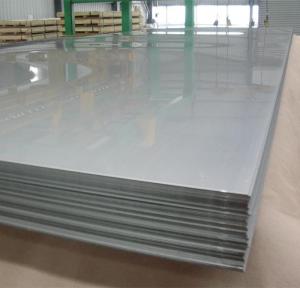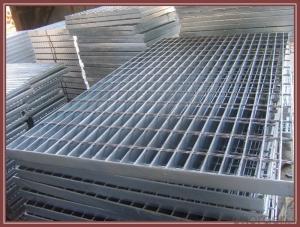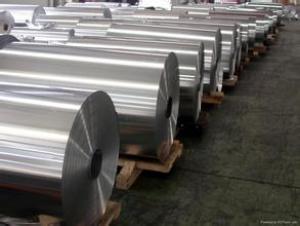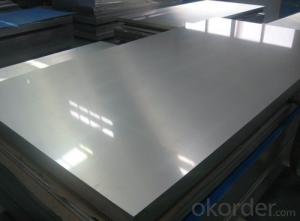Aluminum Perforated Sheets - Aluminium PE Power Coating Coil for Construction
- Loading Port:
- Shanghai
- Payment Terms:
- TT OR LC
- Min Order Qty:
- 8 m.t.
- Supply Capability:
- 2000 m.t./month
OKorder Service Pledge
OKorder Financial Service
You Might Also Like
Specification
Structure of Aluminium PE Prower Coating Coil Specialised in Construction field Description:
Coated aluminum coil/sheet are of a wide range of colors, which gives wonderful appearance no matter in residential and commercial constructions of great exhibition centers.
The coated aluminum coil/sheet have been widely used in the fields of construction and decoration( garage doors, ceiling etc.), electronic appliances, lighting decoration, air-condition air pipes, sandwich panels and drainages etc.
Main Features of theAluminium PE Prower Coating Coil Specialised in Construction field:
1) High flexibility
2) Impact resistance
3) Excellent weather-proof durability
4) Anti-ultraviolet
5) High erosion resist
Images of the Aluminium PE Prower Coating Coil Specialised in Construction field:
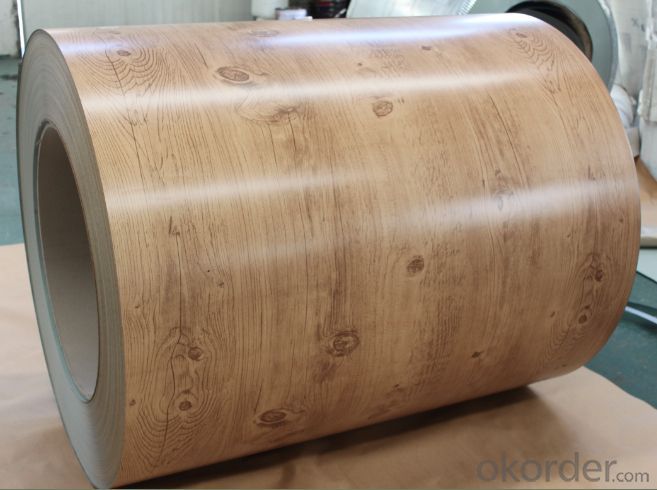
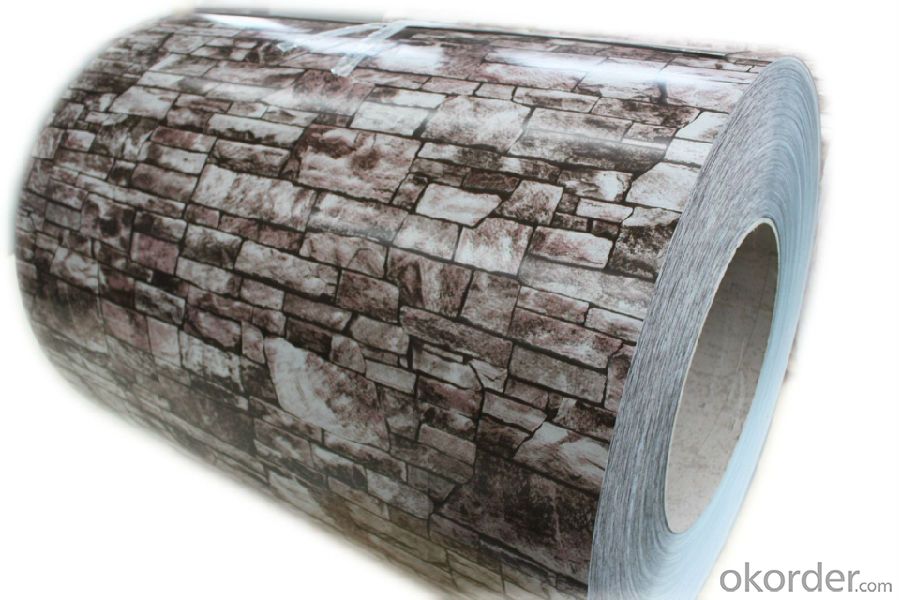
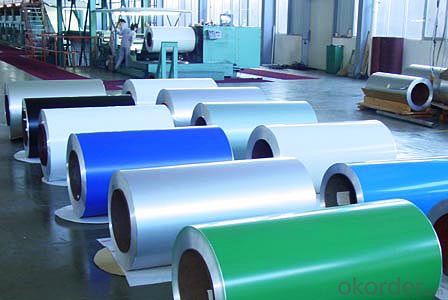
Aluminium PE Prower Coating Coil Specialised in Construction field Specification:
Alloy | A1100,A3003,A1050,A8011 etc |
Temper | H16,H18,H24 |
Thickness | From 0.024mm to 1.2mm |
Width | Standard width:1240mm |
Special width:1300mm,1520mm,1570mm,1595mm | |
Diameter | Standard dia:1200mm |
Interior dia:150mm,405mm,505mm | |
Weight | 2.5 T/coil,3.0 T/coil |
Coating | PE, PVDF, AC |
Surface | Embossed, mill finish, coated |
Color | AS to code RAL |
Gloss | 10-90%(EN ISO-2813:1994) |
Coating Thickness | PE: more than 18 micron |
PVDF: more than 25 micron | |
Coating Hardness (pencil resistance) | More than 2h |
Coating adhesion | 5J(EN ISO-2409:1994) |
Impact Resistance | No peeling or cracking(50 kg/cm,ASTMD-2794:1993) |
Flexibility (T-bend) | 2T |
MEK resistance | More than 100 |
FAQ Aluminium PE Prower Coating Coil Specialised in Construction field:
a.What is monthly capacity
---CNBM is one stated own company and our monthly capacity is about 2000tons.
b. Now which countries do you export your goods?
---Now we export to South East Asia,Africa, North America,South America ect.
- Q: Can 101 aluminum sheets be used in the production of musical instruments?
- Yes, 101 aluminum sheets can be used in the production of musical instruments. They offer good conductivity and durability, making them suitable for various components like instrument bodies, panels, or parts that require lightweight construction.
- Q: Are the aluminum sheets suitable for marine vessel construction?
- Yes, aluminum sheets are suitable for marine vessel construction due to their excellent corrosion resistance, high strength-to-weight ratio, and durability in harsh marine environments.
- Q: Can aluminum sheet be used for insulation?
- Aluminum sheet can be used for insulation, but it is not as effective as other insulation materials, such as fiberglass or foam. Aluminum has a low thermal conductivity, meaning it is a poor conductor of heat. However, it does not have good insulating properties on its own because it does not provide much resistance to heat flow. In order to use aluminum sheet for insulation, it is commonly combined with other insulating materials to enhance its effectiveness. For example, aluminum foil is often used as a radiant barrier in buildings to reflect heat and reduce the amount of heat transferred through walls and roofs. Overall, while aluminum sheet can contribute to insulation, it is usually used in conjunction with other materials to provide better thermal insulation.
- Q: Can aluminum sheets be used for decorative panels?
- Yes, aluminum sheets can be used for decorative panels. Aluminum is a versatile material that can be easily shaped, textured, and colored, making it suitable for various decorative applications. Its lightweight nature, durability, and resistance to corrosion also make it a popular choice for decorative panels in both indoor and outdoor settings.
- Q: Are aluminum sheets suitable for chemical processing applications?
- Yes, aluminum sheets are suitable for chemical processing applications. Aluminum is a versatile and widely used material in various industries, including chemical processing. It possesses excellent corrosion resistance properties, making it highly suitable for applications involving exposure to chemicals and corrosive environments. Aluminum sheets are resistant to many acids and alkalis, including common chemicals such as sulfuric acid, hydrochloric acid, and sodium hydroxide. Aluminum's corrosion resistance is due to the formation of a thin, protective oxide layer on its surface, which acts as a barrier against chemical attacks. This oxide layer can quickly reform if damaged, providing continuous protection to the underlying metal. Furthermore, aluminum is lightweight, has high thermal conductivity, and can be easily formed into different shapes and sizes, making it a preferred choice for various chemical processing equipment and components. In chemical processing applications, aluminum sheets are commonly used for storage tanks, heat exchangers, piping systems, and other equipment that come into contact with chemicals. They can withstand high temperatures and pressures, making them suitable for various processing conditions. Additionally, aluminum is non-toxic, non-magnetic, and has excellent electrical conductivity, which can be advantageous in certain chemical processes. However, it is essential to consider the specific chemical environment and conditions when selecting aluminum sheets for chemical processing applications. Some aggressive chemicals, such as strong bases or highly oxidizing acids, may require additional protection or alternative materials. It is recommended to consult with experts or engineers familiar with the specific chemical processes and conditions to ensure the suitability of aluminum sheets for a particular application.
- Q: Wonderland is the hard aluminum with what tools do? Thank you
- Wrought iron platform made 3 aluminum alloy with a hard aluminumAluminum + granite can also be synthesized
- Q: How do aluminum plates open holes?
- Aluminum plastic panels will not crack, this material is not so brittle glass?
- Q: How does the surface roughness of aluminum sheet affect its performance?
- The overall performance of an aluminum sheet can be greatly influenced by its surface roughness. The roughness of the sheet's surface refers to the presence of irregularities, bumps, and texture. Various methods, such as Ra or Rz, can be used to measure these irregularities. One important effect of surface roughness on aluminum sheet performance lies in its ability to bond with other materials. A smoother surface allows for better adhesion, whether through welding, gluing, or painting. In contrast, a rough surface reduces the contact area and weakens the bond. This is particularly crucial in applications where the aluminum sheet is used structurally or in manufacturing processes that require strong adhesion. Surface roughness also affects the sheet's light reflection capabilities. A smoother surface reflects light more uniformly, resulting in a higher level of reflectivity. On the other hand, a rough surface scatters light in different directions, decreasing overall reflectivity. This property is relevant in applications like architectural cladding, where the desired aesthetic appearance depends on consistent light reflection. Additionally, the surface roughness of aluminum sheets can impact their resistance to corrosion. A smoother surface is less susceptible to corrosion as it provides fewer sites for corrosion to start. Conversely, a rougher surface may contain micro crevices or grooves that can trap moisture, salts, or other corrosive substances, speeding up the corrosion process. Maintaining a smooth surface is crucial in applications where corrosion resistance is vital, such as marine environments or outdoor structures. Lastly, surface roughness affects the mechanical properties of the sheet. A rough surface can concentrate stress, making the sheet more prone to fatigue, cracks, or other mechanical failures. Smoother surfaces distribute stress more evenly, enhancing the sheet's overall strength and resistance to deformation. In conclusion, the surface roughness of an aluminum sheet is of utmost importance in determining its performance. It affects adhesion, reflectivity, corrosion resistance, and mechanical properties. Therefore, it is essential to consider and control surface roughness in various applications to ensure optimal performance and longevity of aluminum sheets.
- Q: Are the aluminum sheets suitable for manufacturing consumer goods?
- Yes, aluminum sheets are suitable for manufacturing consumer goods. Aluminum is a lightweight, strong, and malleable material that can be easily formed into various shapes and sizes. It has excellent corrosion resistance, which makes it ideal for products that may be exposed to moisture or other harsh conditions. Additionally, aluminum is highly recyclable, making it an environmentally friendly choice. Its aesthetic appeal, durability, and versatility make aluminum sheets an excellent option for manufacturing consumer goods such as kitchen utensils, appliances, furniture, packaging materials, and automotive parts.
- Q: I wish to purchase an 8' step ladder as well as a medium length extension ladder. What are the pros and cons of aluminum vs. fiberglass?
- Aluminum Vs Fiberglass Ladder
Send your message to us
Aluminum Perforated Sheets - Aluminium PE Power Coating Coil for Construction
- Loading Port:
- Shanghai
- Payment Terms:
- TT OR LC
- Min Order Qty:
- 8 m.t.
- Supply Capability:
- 2000 m.t./month
OKorder Service Pledge
OKorder Financial Service
Similar products
Hot products
Hot Searches
Related keywords
